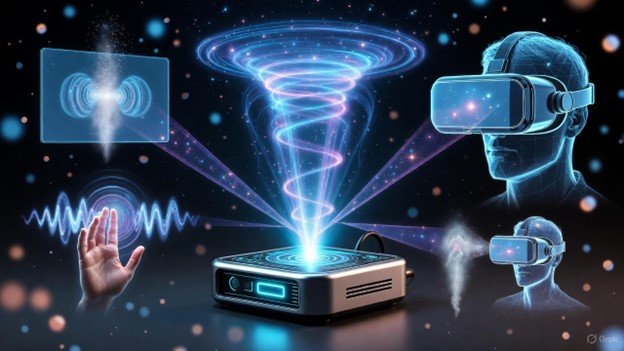The implications are profound, promising to transform computing, communication, and personal technology within years
A scientific assumption held to be true for 180 years has just been shattered by new research, proving once again that humans need to remain humble and continually question even the most established beliefs.
The Faraday effect is a phenomenon where light changes its direction of vibration when it passes through a material that is exposed to a magnetic field. Discovered in 1845 by Michael Faraday, it shows a special connection between light and magnetism.
While scientists have long believed that this effect happens only because of light’s electrical properties interacting with magnetic materials, new research from the Hebrew University proves that the magnetic part of light also plays a big role — contributing up to 70% of this rotation (especially with infrared light).

With the discovery, tomorrow’s holographic projectors may make recreate hyper-realistic image-scapes that enable unprecedented innovation and exploration
In simpler terms, imagine light as a wave that can wobble (polarize itself) in different ways that are variations or combinations of linear, circular, and elliptical polarization. When this light goes through a magnetized material, it twists its wiggle. For 180 years, scientists have believed that only one part of light caused this twist: now the research has proven that both the electric and magnetic parts team up to do this.
This discovery could help engineers develop new technologies such as improved data storage and futuristic quantum computers — by improving their understanding and control of how light and magnetism work together.
So, the big idea is that light does not just illuminate, but also pushes on tiny magnets inside materials. Conventional equations describing the Faraday rotation angle and magnetic torque will be revised to reflect this previously overlooked magnetic influence.
Who knows, within five years we may see:
- Data storage devices that use magnetic-light interactions for ultra-fast, unhackable encryption, revolutionizing cybersecurity and personal privacy
- Holographic projectors that create fully controllable magnetic light fields for immersive virtual reality, creating sensations of touch, smell, and physical presence
- Advanced eyewear that dynamically adjusts polarization using magnetic light control, allowing wearers to see through fog or glare
- Personal protective gear that can instantly alter magnetic and optical properties to deflect harmful radiation or cloak wearers from view using magnetic light manipulation
